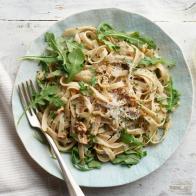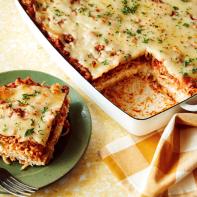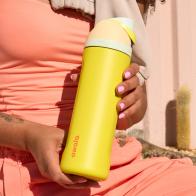
Buñuelos de Viento
- Level: Intermediate
- Total: 1 hr 40 min (includes resting time)
- Active: 1 hr 10 min
- Yield: 40 to 50 buñuelos
-
- Nutritional Analysis
- Per Serving
- Serving Size
- 1 of 46 servings
- Calories
- 76
- Total Fat
- 4 g
- Saturated Fat
- 0 g
- Carbohydrates
- 9 g
- Dietary Fiber
- 0 g
- Sugar
- 5 g
- Protein
- 1 g
- Cholesterol
- 9 mg
- Sodium
- 56 mg
- Level: Intermediate
- Total: 1 hr 40 min (includes resting time)
- Active: 1 hr 10 min
- Yield: 40 to 50 buñuelos
-
- Nutritional Analysis
- Per Serving
- Serving Size
- 1 of 46 servings
- Calories
- 76
- Total Fat
- 4 g
- Saturated Fat
- 0 g
- Carbohydrates
- 9 g
- Dietary Fiber
- 0 g
- Sugar
- 5 g
- Protein
- 1 g
- Cholesterol
- 9 mg
- Sodium
- 56 mg
Ingredients
Topping:
Batter:
Directions
Special equipment:
a buñuelo rosette mold (iron); a deep-fry thermometer- For the topping: Combine the sugar and cinnamon in a medium bowl. Set aside.
- For the batter: Sift together the flour, sugar, baking powder and salt in a large bowl; whisk to combine. Add the orange zest, vanilla, eggs and brandy, if using, and mix to incorporate. Slowly stream in the milk and mix to combine. Let the batter rest for at least 30 minutes. It should be the consistency of crepe batter.
- Heat the oil in a heavy-bottomed high-sided pan until the temperature registers 350 degrees F. Place a buñuelo rosette mold (iron) in the oil to heat up at the same time.
- Dip the rosette mold halfway into the batter, making sure the excess drips off, then place it in the hot oil (see Cook's Note). Cook the buñuelo until lightly golden and starting to release from the mold, 15 to 30 seconds. The buñuelo should release easily, but if not, use tongs or a fork to help. Flip and continue to fry until golden all over and crisp, 15 to 30 seconds more. Transfer the buñuelo to a wire rack lined with paper towels and toss in the cinnamon sugar while hot. Repeat with the remaining batter. Feel free to cook more than one buñuelo at a time, but do not overcrowd the pan, which may cause the temperature to drop.
- Store leftover buñuelos in an airtight container overnight.
Cook’s Note
When measuring flour, we spoon it into a dry measuring cup and level off excess. (Scooping directly from the bag compacts the flour, resulting in dry baked goods.) The batter for the buñuelos is quite simple, but frying them requires a bit of practice. Here are some tips for frying them successfully: It is important to use a seasoned rosette mold or the batter will not adhere to it. Heat up the mold in the oil before dipping it into the batter and make sure not to dip the mold more than halfway into the batter. Keep an eye on the temperature of your oil and reheat it between batches if necessary. If you have trouble separating the buñuelo from the mold, use a fork or tongs. Let excess oil on the mold drip off before dipping it into the batter, or the batter may not stick. If your mold is too hot, the batter will cook instantly and slide off the mold.
Looking for Something Else?
Related Pages
- Apple Cake with Maple, Orange Zest and Pistachios...
- Cranberry-Orange Sauce Recipe
- Candied Orange Zest Recipe
- Blueberries with Orange Zest Shortcake Recipe
- Japanese Rice with Black Olives and Orange Zest...
- Pacific Halibut with Caramelized Fennel, Black...
- Whole Seabass with Fennel and Orange Zest Recipe
- Pan de Muerto Recipe
- Cartellate Recipe































